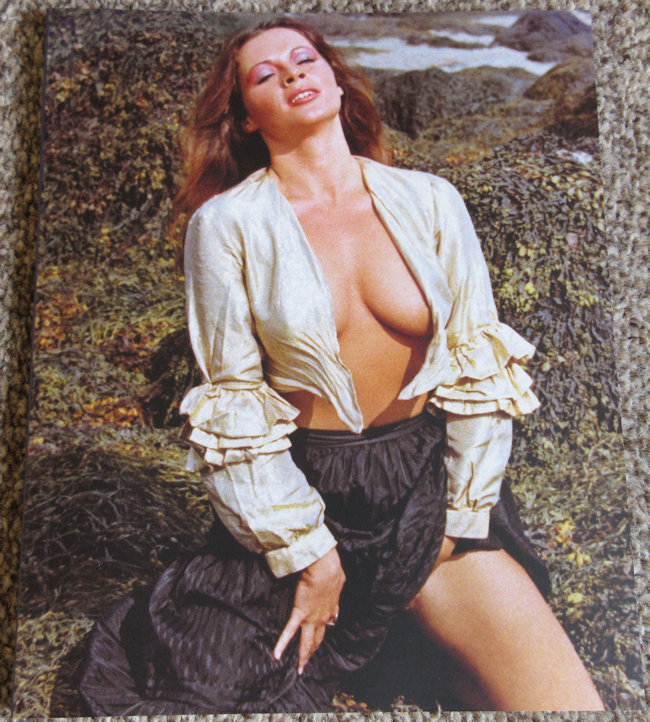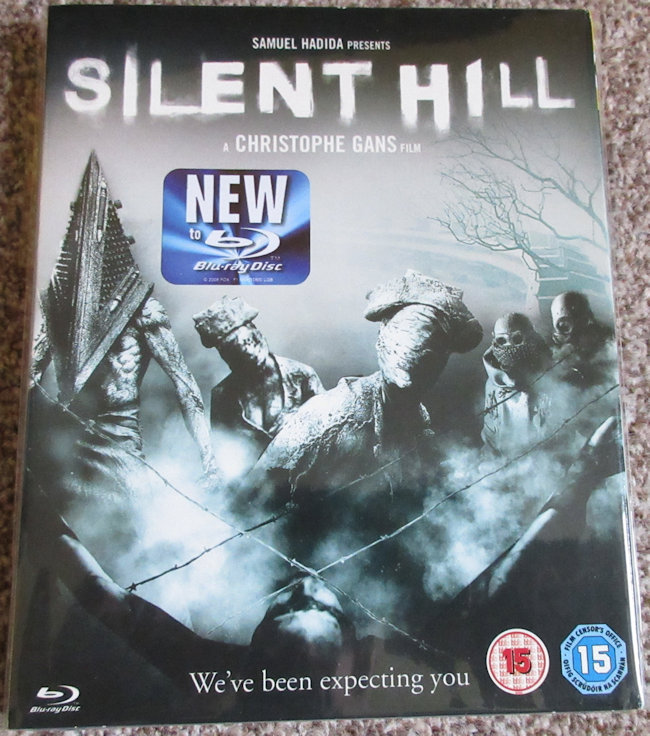Two young females with a propensity for thieving are forced to escape into the countryside by themselves after their male partner is shot during a high speed car chase. Removing their clown make-up, and therefore rendering themselves unidentifiable, they rob a motorcycle before stopping off at a hot dog stall to steal some food (talk about kleptomania!). However their travels seem to be destined to take a turn for the mystical when they stumble across a desolate graveyard in the middle of nowhere. Catching up on some sleep (and nearly getting buried alive in the case of one of the girls) they head off on their meandering journey only to discover an isolated castle that initially seems deserted. Taking up camp inside one of the oddly inviting rooms they get down to a bit of lesbian skin-rubbing before it becomes apparent to them that they are not alone: the castle is inhabited by a number of vampires and their human minions, all ruled over by a dying vampire who needs new ‘blood’ in the family to keep the demon gene alive. The girls are soon infected and dragged into a weird world of amorality and debauchery.
Jean Rollin’s fourth feature length film, Requiem for a Vampire (1971), continued a development of the themes that he would eventually become renowned for amongst the small pockets of cult fans around the world who remain devoted to his work to this day. Rollin’s approach here appears to be fairly relaxed as the film rolls on with little sense of urgency, stretching out a minimalist plot to create a dreamy fantasy world populated by unusual people whose behavioural patterns will barely be recognisable to the likes of us. Absorbed in the right way Requiem... can be an immersing experience, constructing around the viewer an enticing supernatural domain where sex and death collide without regard for the heavily religious construct that we generally find ourselves trapped within.
Conventional film-making is no point of comparison when it comes to analysing the works of Jean Rollin, as many of his fans would surely attest, therefore there is little here that is likely to attract followers of the mainstream. A film such as this is more like a forbidden treasure appreciated by just a few, whilst the rest of humanity remains blissfully oblivious to what’s really there. But the true bliss is in the appreciation. Not aiding any commercial appeal, Requiem… plays almost like a silent movie for much of its running time, telling its story principally through the actions of the two girls, rather than words. With the first half hour of the movie playing almost completely without dialogue, the script itself (very quickly written according to Rollin's own testament) must surely have used up no more than a few pages.
Breaking up the barren silence, aside from sounds of nature, our attention is maintained partly by exquisite, occasionally insane music punctuated by more melodic interludes, making this movie feel like an epic prog rock track reconstructed visually, and the soundtrack truly comes into its own during the show-stopping dungeon orgy/rape sequence where several of the vampire’s human neanderthal minions force themselves on a group of chained women, spiralling intensity towards near fever pitch. This was the scene that once caused a problem for the BBFC in the UK (now uncensored on the Indicator discs) and even Rollin himself has claimed that it went on for too long (several screen minutes), but call me a perverted crazy man, I love it! It’s surreal, sexy, violent, defiantly non-PC, and completely mad. The more macabre elements of the movie are not spine-tingling in the slightest, but there is a skewed gothic edge which keeps one leg rooted in horror, an innate genre acknowledgement common to most of Rollin’s non-pornographic outings - it’s unlikely to satisfy those more accustomed to the conventional slasher or torture films that proliferate these days.
One of Rollin’s other strengths is demonstrated here in abundance: great choice and photography of natural (i.e. non-set based) locations. The castle, cemetery, and surrounding countryside is quite a feast for the eyes. Finally, the protagonists themselves are typical choices for this director - two nubile young women with a tendency towards physically relating to one another, making their way through an alien world which they have no real inclination to question. Nobody made films like Jean Rollin and this one - shot in his prime - is one of the best examples of his work.
The old US Redemption/Image DVD utilised a non-anamorphic transfer that was a mess of interlacing issues, haze, moiré effects, and some digital problems that I’d never even seen anywhere else. It was higher in detail than the Redemption VHS tape I bought in the nineties, but only marginally (although I was glad for this at the time I bought the DVD due to my old UK tape - where I first thankfully discovered this film in the earlier 90s - being heavily cut). The Kino-distributed Redemption Blu-ray blew away the old DVD in every respect. There were no noticeable digital flaws, simply a film-like image with balanced colour and nice detail. There was a special edition DVD of the film previously from Encore, improved over the Redemption DVD, which appeared to be ramped up in the brightness department with a different hue. The Blu-ray was a little more detailed, but colour and brightness certainly were more natural. Sound was appreciably provided in original French language with good subtitles, and no other way should it be viewed (there is an English dub but personally I can't see anyone remotely interested in this film watching it that way, unless they really do hate subtitled material). The Encore DVD did, however, win in the extras department, but on the BD you got an introduction from the late director, an 18 minute documentary on the film, a ten minute interview with Louise Dhour, some trailers and a nice booklet.
As with prior releases of Jean Rollin projects, Indicator (the Powerhouse Films label) have trumped everything with dual releases on either UHD or HD Blu-ray, limited to 10000 units. Firstly you have the choice to watch either English or French versions - presumably seamlessly branched, there's a few seconds of difference between them (there is also a little more dialogue in the English version!). The 1.66:1 4K-restored image is sharper than ever, although one might prefer the colour timing of the Redemption Blu-ray, which is warmer and not as bright. Sound is crystal clear, English translated subtitles are excellent, and the overall package is typically one of beauty, my only complaint if one can call it that being the cover selection. I personally would have preferred poster art over the head vampire's face, but it really is not a deal-breaker. As before there is a gorgeous book, digipack containing the disc, and a hard outer case (individually numbered).
Many extras have been pulled from the old legendary Encore edition alongside Redemption's Blu-ray, including interviews with Rollin (which are, as he speaks in English, quite difficult to understand), a nice talk from Louise Dhour (who had appeared in a number of Rollin projects), the candid actor - Paul Bisciglia - who played the randy old guy chasing one of the girls through the castle, plus a segment where Rollin talks about his published books, reading a portion of one of them for us. Additionally we get a newly edited 40 minute reflection of the shoot and general Rollin themes from ever-present Natalie Perry, the assistant director, and Daniel Bird. As with many of the other Indicator Rollin releases, there's also a packed talk (7 minutes) from the informative and knowledgeable Virginie Selavy.
Three bonus extras present less effective 'clothed' sequences of shots in Requiem..., which I assume would have been used in a further truncated version of the film. There are three trailers (Caged Virgins being a highlight), a stills gallery, a full commentary (Troy Howarth and Nathaniel Thompson), and partial commentary from Rollin himself.
The book, mentioned above, consists of a reasonable essay by Maria J Perez Cuervo, the original French press book text (translated), a fine retrospective on Requiem... by Rollin himself (which includes a particular anecdote that can't possibly be true!), a reproduction of one of Rollin's short stories, and a piece about producer Harry Novak's introduction of Rollin to American audiences. The best component of the book is an interview with Rollin, originally published for Video Watchdog, where he talks about a number of his 70s projects including a bit about the legendary Phantasmes, which I truly hope Indicator will restore at last.
It almost goes without saying that this is another exemplary release from Indicator.


















